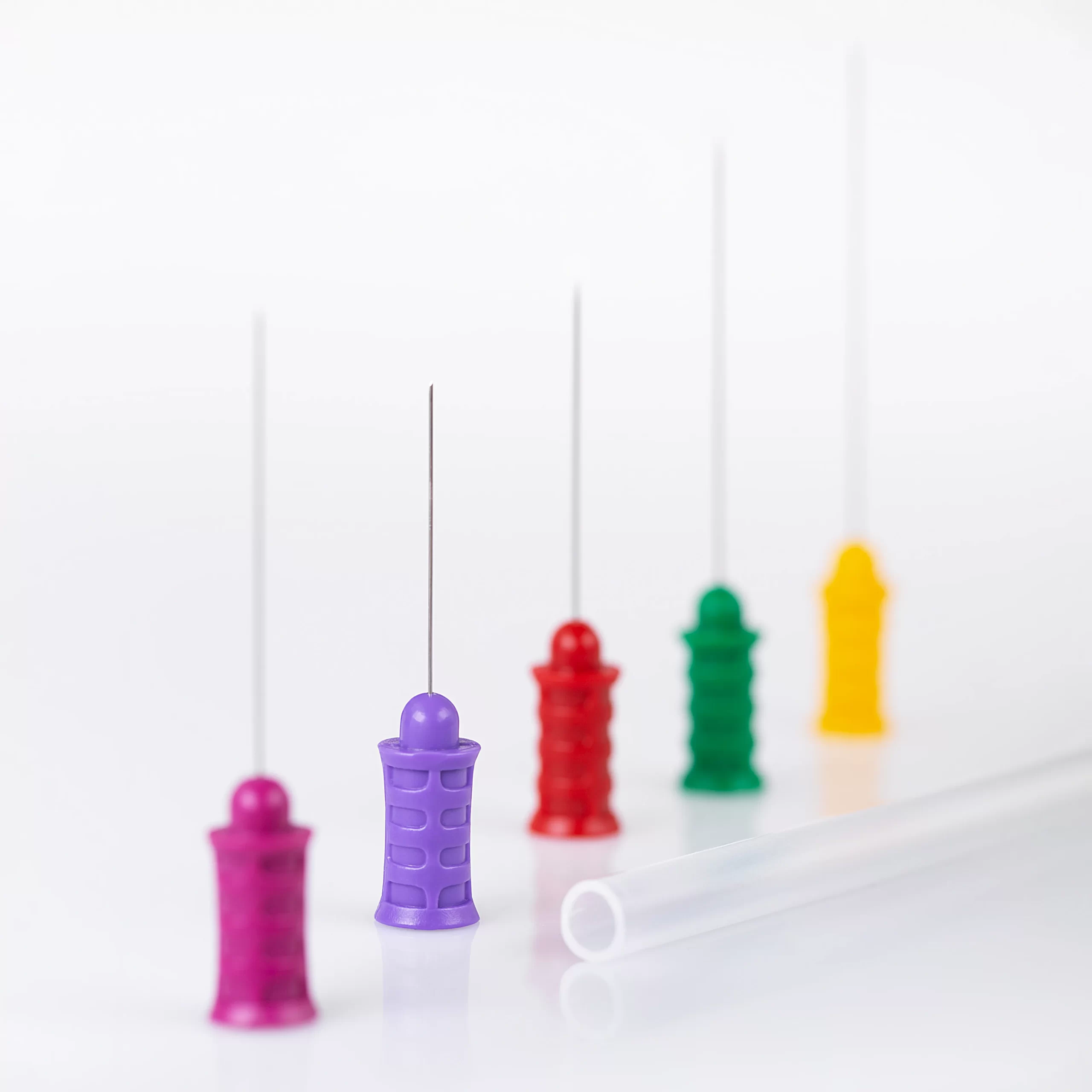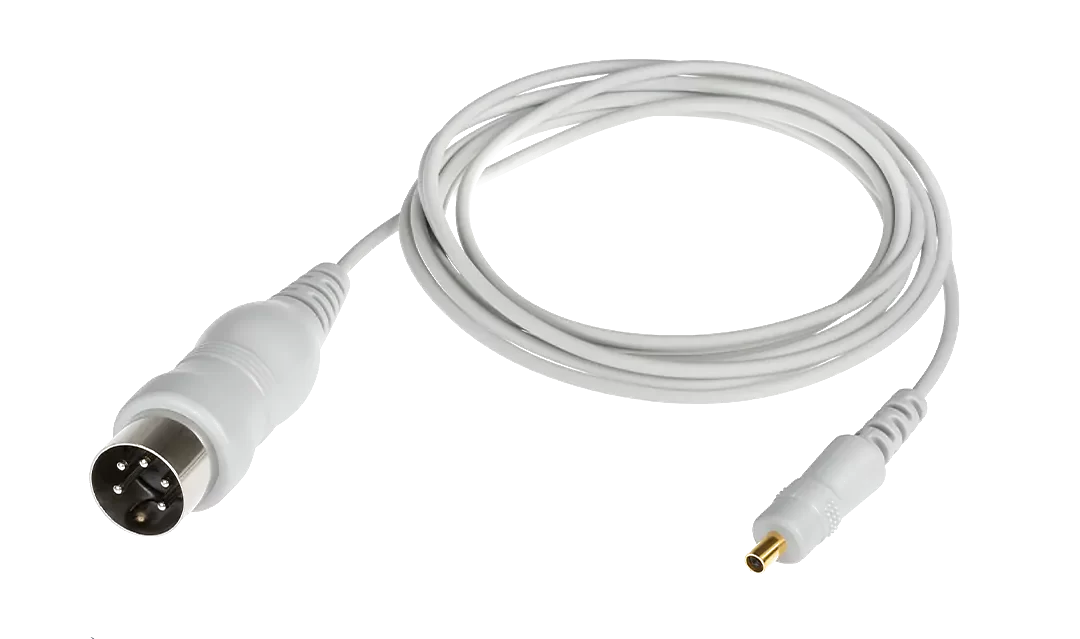Concentric EMG Electrode
Features:
- Precise signal and zero baseline
- Ultra sharp and smooth penetration
- Ergonomic design
- Made of stainless steel with high level of strength


Effortless oppening

Easy to open
Connection Cable
Features:
- Precise signal transfer
- 5 pin standard connector (compatible with any EMG machine)
- Highly flexible
- Reusable
- Length : 150 cm
- Durable design

What is EMG and its applications?

-
- what’s EMG?
Electromyography (EMG) is the electrical diagnostic procedure that tests the health of the patinet muscles and nerves that control them.
- what happens during an EMG test?
an intramuscular EMG is performed by inserting a very thin needle electrode through the skin into the muscle. The electrical activity given off by your muscles in the rest and contraction state are then picked up by the electrode and it’s eventually transferred to the EMG machine through a cable. This activity appears on the monitor, and the electromyographer (who is usually a neurologist) may recognize the disorder by interpreting the signals.
- when an EMG test is required?EMG tests are usually ordered when patients are having problems with their muscles or nerves such as when you have a pinched nerve in the back or the neck, tingling or numbness in the arms or legs. An EMG may show if you have a nerve compression somewhere or a nerve injury. Weakness or pain in a specific muscle may also be indicative of a nerve or muscle disease and require an EMG test.
- what’s EMG?
Electromyography (EMG) is the electrical diagnostic procedure that tests the health of the patinet muscles and nerves that control them.





